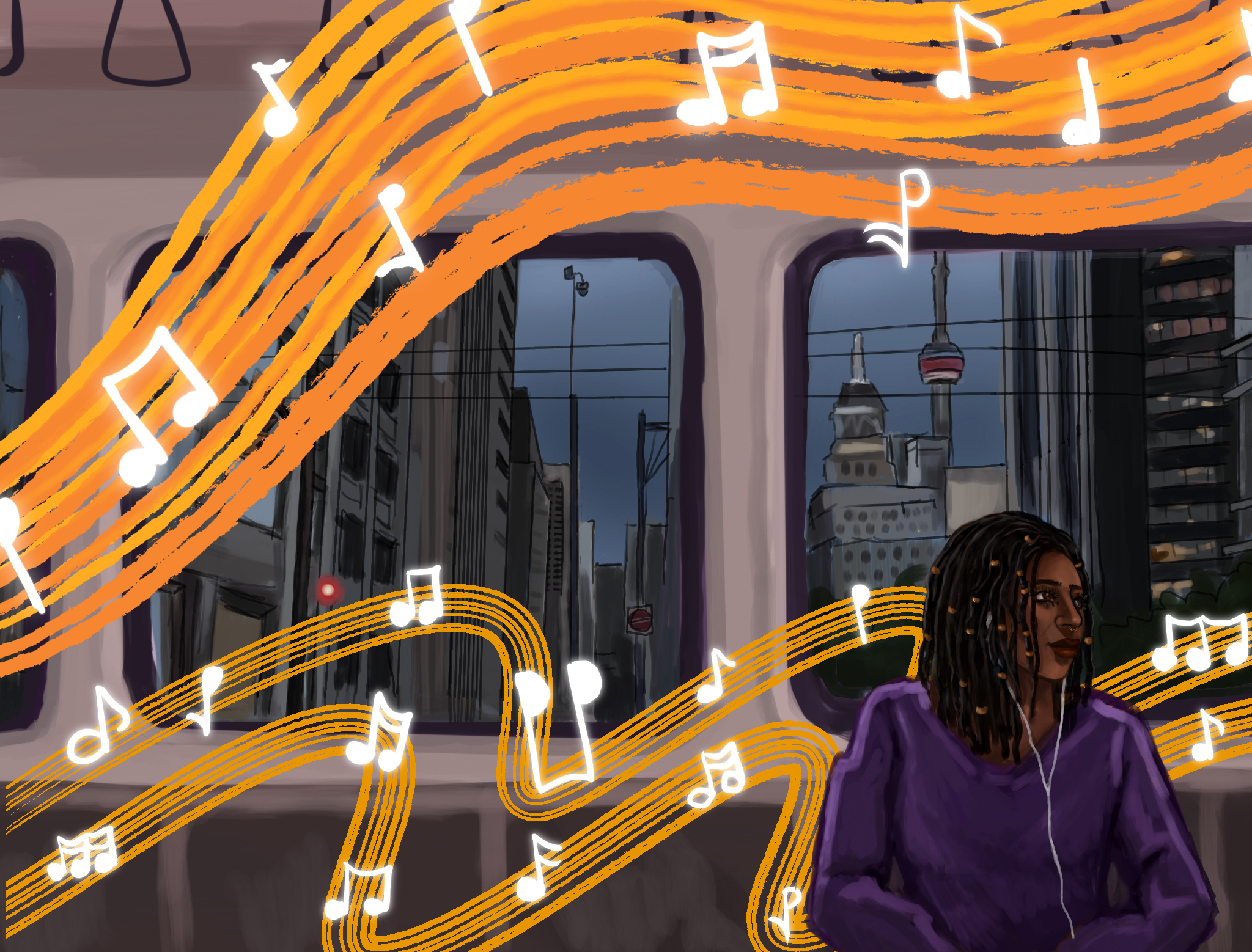An entertaining commute with A More Beautiful Journey
The new app creates ties between Torontonian commuters, artists, and the city they share.
A More Beautiful Journey (AMBJ) was released in celebration of the Toronto Transit Commission’s (TTC’s) 100th anniversary. As a long-time commuter, I was immediately drawn to the concept. This iOS and Android app tracks your location to create a customized soundscape based on where you are in the transit system. I thought the app would be a fun way to discover more about Toronto’s arts scene and add some flavour to my commute, and I was not disappointed.
AMBJ matches artists and songs to places that are significant to their personal lives. As you pass through a particular location, a song will begin to play and you’ll get a pop-up audio with facts about the area’s history, its cultural significance to Toronto’s music scene, or the artist’s personal ties to it. The audios use the authentic voices of each creator to tell their individual stories. Each artist plays a significant role in creating a narrative that they want their work to tell. This makes the app feel poignant as if the artists are letting us into their lives.
I listened to every track available on the app and every single one slaps. Each song works cohesively but remains unique—a testament to the diverse stories that make up Toronto’s culture. Each destination in the app is displayed through an augmented reality experience—the technology reacts in real-time as you pass into a new neighbourhood, take a turn, or make a transfer. This experience turns the city itself into a 3D canvas—one where art is created as you travel.
Before using AMBJ, my commute was made up of streaky bus windows and the same scenery I’d seen a hundred times before. Now, I can see the layers of life and history that inform the complex and colourful melodies playing through my earbuds. The app creates a beautiful harmony between the artist, the commuter, and the city they share.
The app is still very new, so there are inevitable glitches. For starters, it’s difficult to learn—the first time I opened it, despite the pop-up windows with friendly, well-meaning instructions, I tapped around for a few minutes before giving up in frustration. Later, I found an “at home” option that allowed me to give the app a test run before taking it for a spin on my commute the next day.
Additionally, while AMBJ says its purpose is to “transform public transit,” it works better as a self-guided music tour. Currently, there is only one artist (and thus one song) per neighbourhood, which means that users with the same daily commute will listen to the same thing every day. Also, the app currently only works for 25 stretches of transit lines. While this is a fairly large area, it feels deficient—as I was jamming out, the music suddenly stopped and the app revealed that the area I was in hadn’t been mapped yet. On the note of malfunctions, however, I was delighted that the app didn’t crash once, even on my three-year-old iPhone 7.
Finally, while the app boasts that it’s accessible to “millions of daily riders across the TTC,” the interface is web-based. Since the TTC still does not provide Wi-Fi on its transit lines, this automatically excludes users who don’t have data. An easy way to overcome this would be to introduce a feature that allows users to input their commute beforehand, generating a playlist that they can download before leaving home.
Overall, “A More Beautiful Journey” is a wonderful concept and a gorgeous app bursting with potential for commuters and artists. I’ll be keeping it on my iPhone to follow its updates as it hopefully expands to include more locations, more artists, and more features. This app is going places, and I’m excited to go places with it.
Copy Editor (Volume 50); Associate Arts & Entertainment Editor (Volume 49) — Maja Ting is in her third year at UTM, completing a Specialist degree in Forensic Biology. In her spare time, she reads, visits the ROM repeatedly, waits for public transit, talks and reckons more than is good for her, and refers to herself in the third person.


